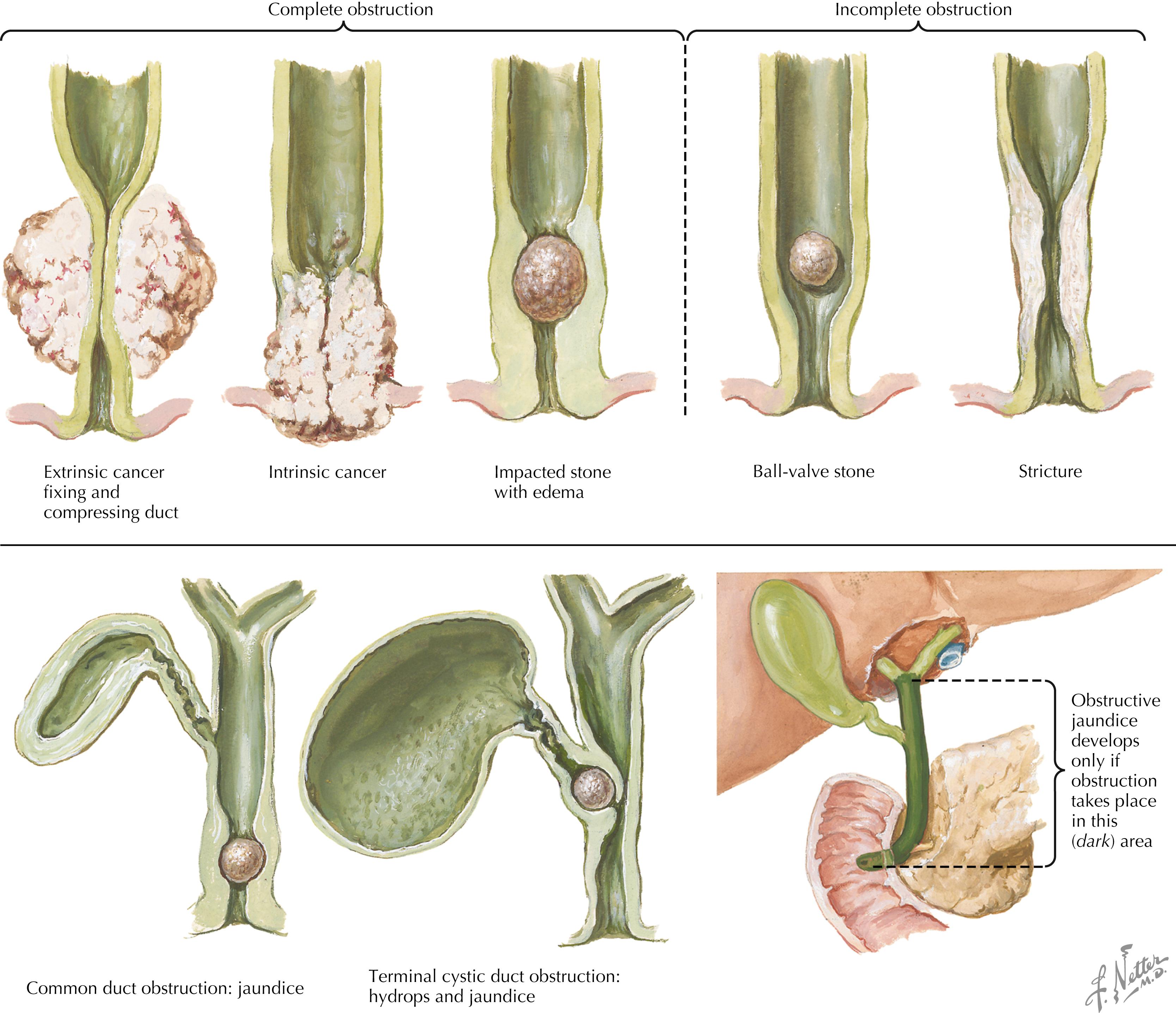Physical Address
304 North Cardinal St.
Dorchester Center, MA 02124
Acute ascending cholangitis is a biliary tract infection resulting from bile duct obstruction. It carries potential for significant morbidity and mortality and requires prompt diagnosis and treatment. Clinical presentation can range from a mild, self-limited course to a serious, life-threatening condition requiring emergent intervention. Patients typically have some combination of fever, jaundice, and abdominal pain. A methodical patient history and imaging workup can usually elucidate the cause of the biliary obstruction. Therapy should be initiated swiftly; it relies on aggressive resuscitation, appropriate antibiotics, and prompt biliary decompression. Outcome largely depends on the underlying cause of biliary obstruction and timely recognition and treatment.
A 58-year-old woman with type 2 diabetes, obesity, and hypertension presented to the emergency department (ED) with a chief complaint of abdominal pain and fevers. She reported having experienced this pain before but never of this severity. The pain has worsened over the past 12 hours and she began to experience subjective chills and rigors, prompting her to present to the ED for evaluation.
Upon arrival at the ED, the patient’s vital signs were as follows: temperature 103.6°F, heart rate 112 beats/min, blood pressure 110/45 mm Hg, and respiratory rate 22 breaths/min. On physical examination, her skin was moist and warm; eye exam revealed scleral icterus. Her cardiopulmonary exam was normal. Her abdomen was obese, soft without guarding but with moderate tenderness to deep palpation in the right upper quadrant. Murphy sign was negative. There was no evidence of ascites or lower extremity edema. Serum chemistry and hematologic panel were remarkable for a leukocytosis with a white blood cell (WBC) count of 19,000/μL; glucose, 245 mg/dL; blood urea nitrogen, 35 mg/dL; creatinine, 1.2 mg/dL; potassium, 2.7 mEq/L; and total bilirubin, 7.6 mg/dL. Blood cultures were positive for Escherichia coli . Right -upper-quadrant ultrasound demonstrated gallstones and a dilated common bile duct.
A diagnosis of acute ascending cholangitis secondary to choledocholithiasis was suspected. She was started on broad antibiotics and fluid resuscitated. Endoscopic retrograde cholangiography demonstrated a stone completely obstructing the common bile duct. The stone was removed with graspers, suppurative cholangitis was confirmed, and the biliary obstruction was relieved. The patient improved on antibiotics and was eventually discharged.
An estimated 10% to 15% of the more than 1 million patients diagnosed with gallstones annually in the United States will have stones in the common bile duct. Of these patients, over half will develop symptoms of acute cholangitis—a conservative estimate of 50,000 to 75,000 cases per year. Although the disease is prevalent worldwide, in Western countries over 85% of bile duct stones originate from the gallbladder, whereas in East Asian countries, where liver fluke infections are endemic, primary brown pigment stones are a significant source of recurrent pyogenic cholangitis.
Ascending cholangitis is an infection of the intrahepatic and extrahepatic biliary system that occurs as a consequence of stagnant bile. It is well established that both biliary obstruction and bacterobilia are necessary for clinical disease manifestation ( Fig. 43.1 ). Diminished biliary outflow, most commonly caused by stone disease, predisposes to infection of the normally sterile, free-flowing bile. The consequent bacterial proliferation, together with disrupted hepatocellular tight junctions from increased intraductal pressures, results in the release of systemic mediators and even overt bacteremia through translocation into the hepatic veins or perihepatic lymphatics. Patients with indwelling biliary stents for malignant strictures and those who have undergone surgical biliary-enteric reconstruction have colonized biliary systems and can develop cholangitis even with low-grade obstruction. Other causes of biliary obstruction include primary sclerosing cholangitis, parasitic infestation (Clonorchis, Opisthorcis), and acquired immunodeficiency syndrome (AIDS) cholangiopathy.

Because the majority of cases in the United States result from choledocholithiasis, the risk factors for ascending cholangitis parallel those of gallstone disease: advanced age, female gender, obesity, metabolic syndrome, rapid weight loss, gallbladder stasis, cirrhosis, and Crohn ileitis. Also, given that bacterobilia is a prerequisite for the development of cholangitis, biliary interventions that introduce bacteria into the bile duct place the patient at risk of developing cholangitis. This is evident in patients with malignant strictures. Although it is rare for such patients to develop cholangitis de novo, the risk of cholangitis is significantly increased after biliary manipulation, especially with inadequate drainage.
Become a Clinical Tree membership for Full access and enjoy Unlimited articles
If you are a member. Log in here